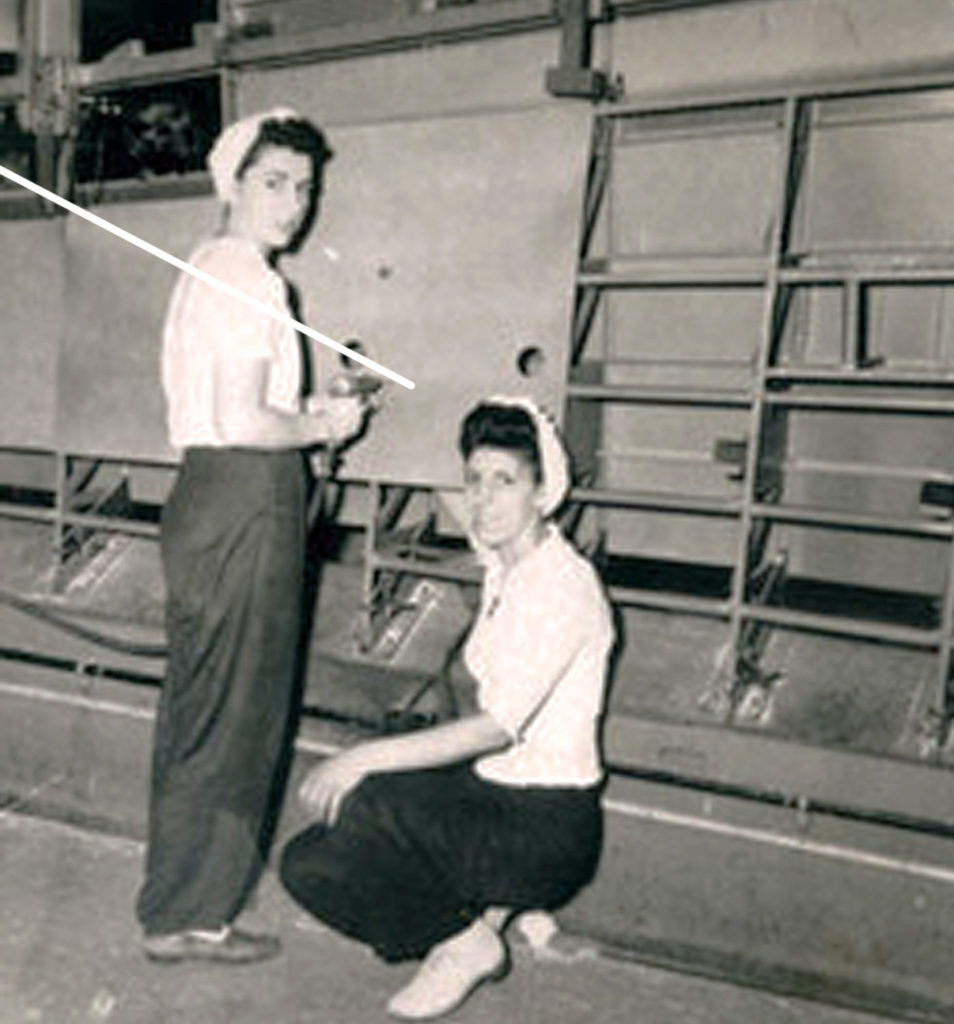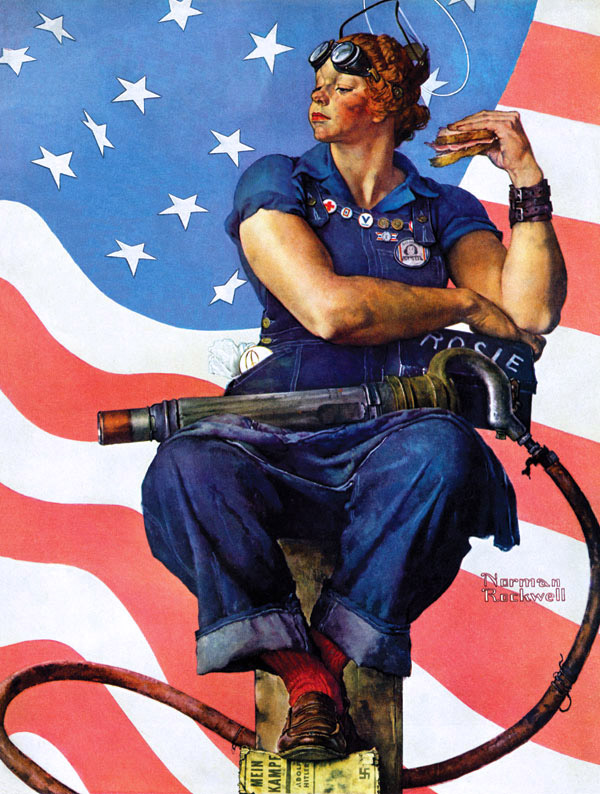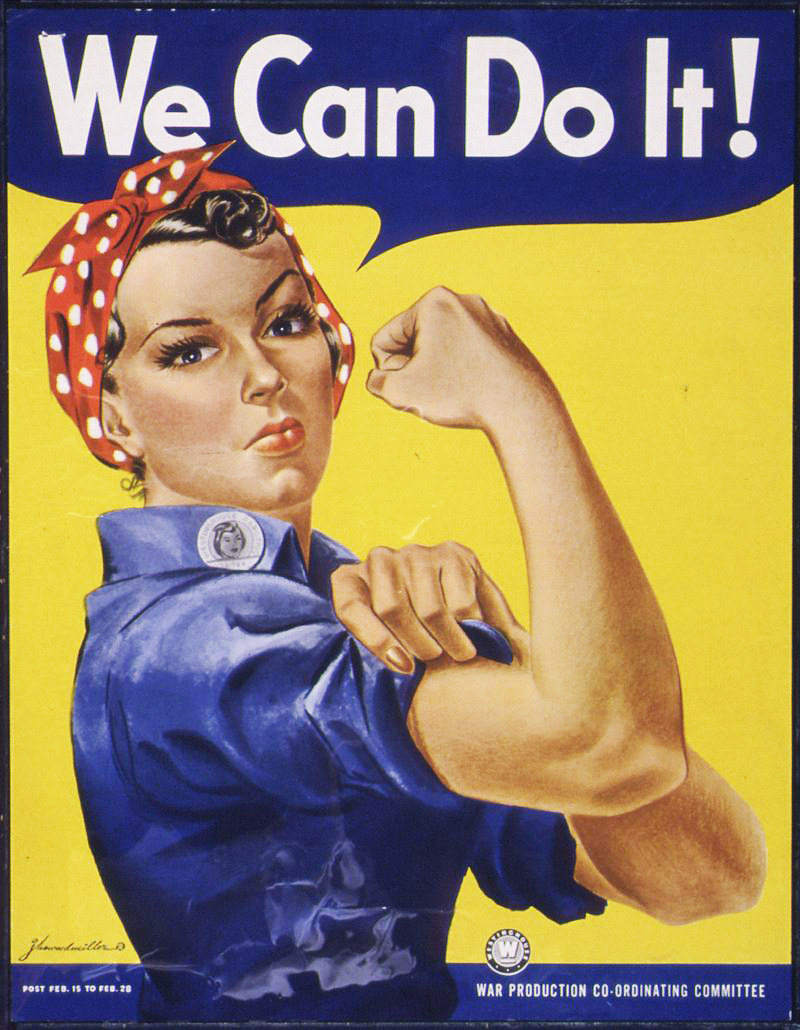Sometimes the images that are burned into our collective consciousness over time are not the original ones that relate to a story. Rosie the Riveter is one such case. The iconic image of a young woman wearing a red bandanna and blue denim shirt while flexing her muscle as she exclaims “We Can Do It!” is the image that we associate with female empowerment during World War II. It was actually only displayed for two weeks during WWII and few Americans ever even saw it at the time. Why is it so popular today?
During WWII, “Rosie the Riveter” became a name used to describe women who took up the fight for the by working in factories, while the men went off to war. They were so named after Rose Bonavita, who was called to duty at the former General Motors Eastern Aircraft Division in North Tarrytown, New York. Rose and her factory partner, a fellow Italian American named Jennie Florio, drilled a record 900 holes and placed 3,300 rivets in an airplane tail in six hours. The pair were recognized with a personal letter from President Franklin Roosevelt in honor of their outstanding work.
The original Rosie image was later popularized through a promotional film designed to bring women into the workplace. The name stuck after a song called “Rosie the Riveter” was played on the radio in early 1943 and became a hit. In May of that year, Norman Rockwell created a painting titled “Rosie the Riveter” for the cover of the Saturday Evening Post, but today, it is not his illustration that comes to mind when even Rosie is mentioned.


“We Can Do It!” was a 1943 wartime poster produced for Westinghouse Electric as an inspirational image to boost female worker morale. It was only displayed in their plants. It was rediscovered in the early 1980s and was widely reproduced in many forms, often called “We Can Do It!” but also called “Rosie the Riveter” after the iconic figure of a strong female war production worker. The image made the cover of the Smithsonian magazine in 1994 and was fashioned into a U.S. first-class mail stamp in 1999. The poster is one of the ten most-requested images at the National Archives and Records Administration.
Once the war concluded, women typically returned to domestic roles and Rosie was largely forgotten during the baby boom years from 1946 to 1964. By the early 1980s, women were looking for images from the past that they could reclaim as a symbol of female empowerment. Unlike Rockwell’s work, the famous Westinghouse poster was not under copyright. Its use became an immediate and resounding success. While the slogan “We Can Do It!” was originally about winning the war, it is now meant to suggest women can do anything they put their minds to. The image is now recognized as a symbol of the empowerment of women worldwide, even in the countries that the United States fought against during WWII and it all started with two Italian American workers, Rose Bonavita and Jennie Florio in that factory in North Tarrytown, New York.





